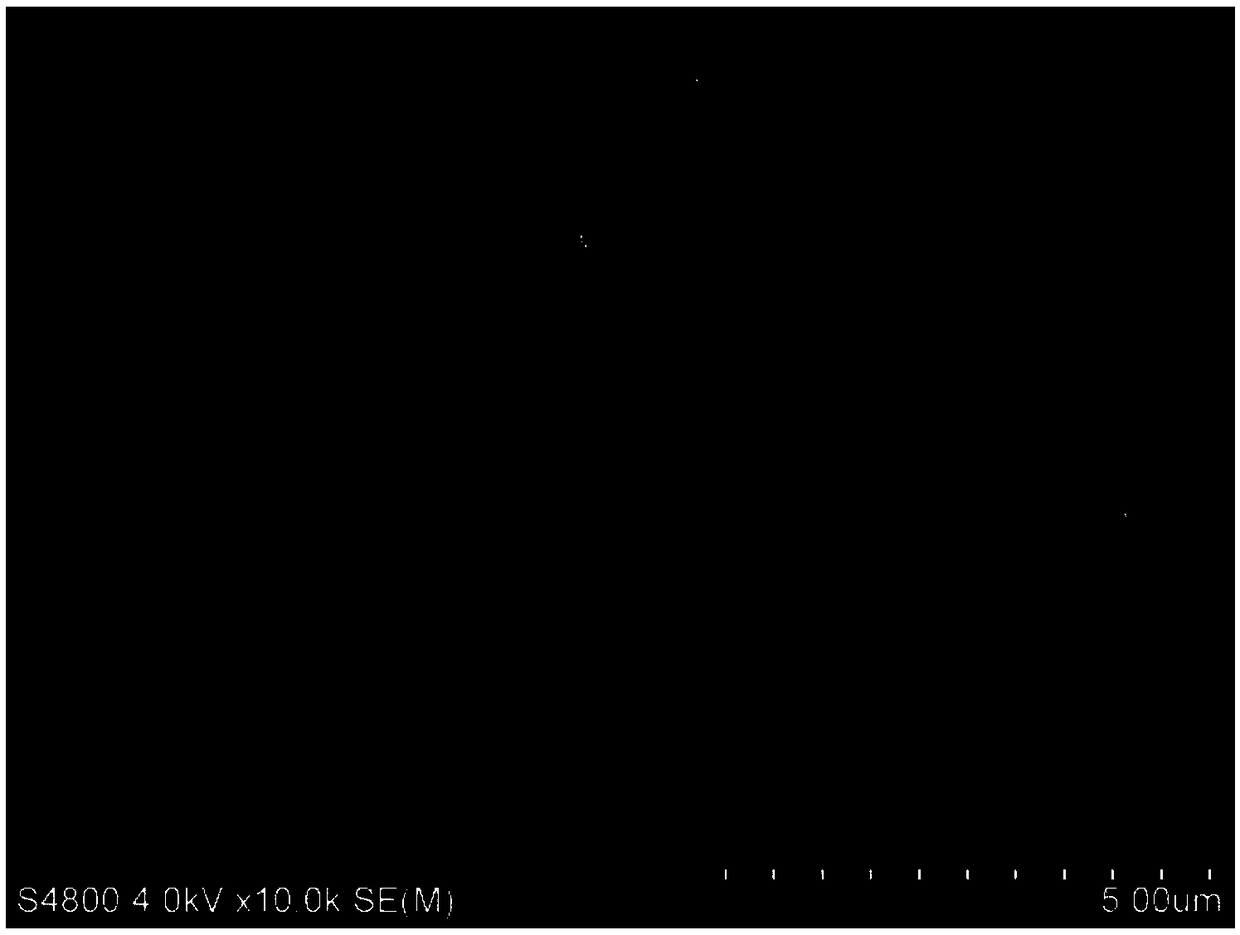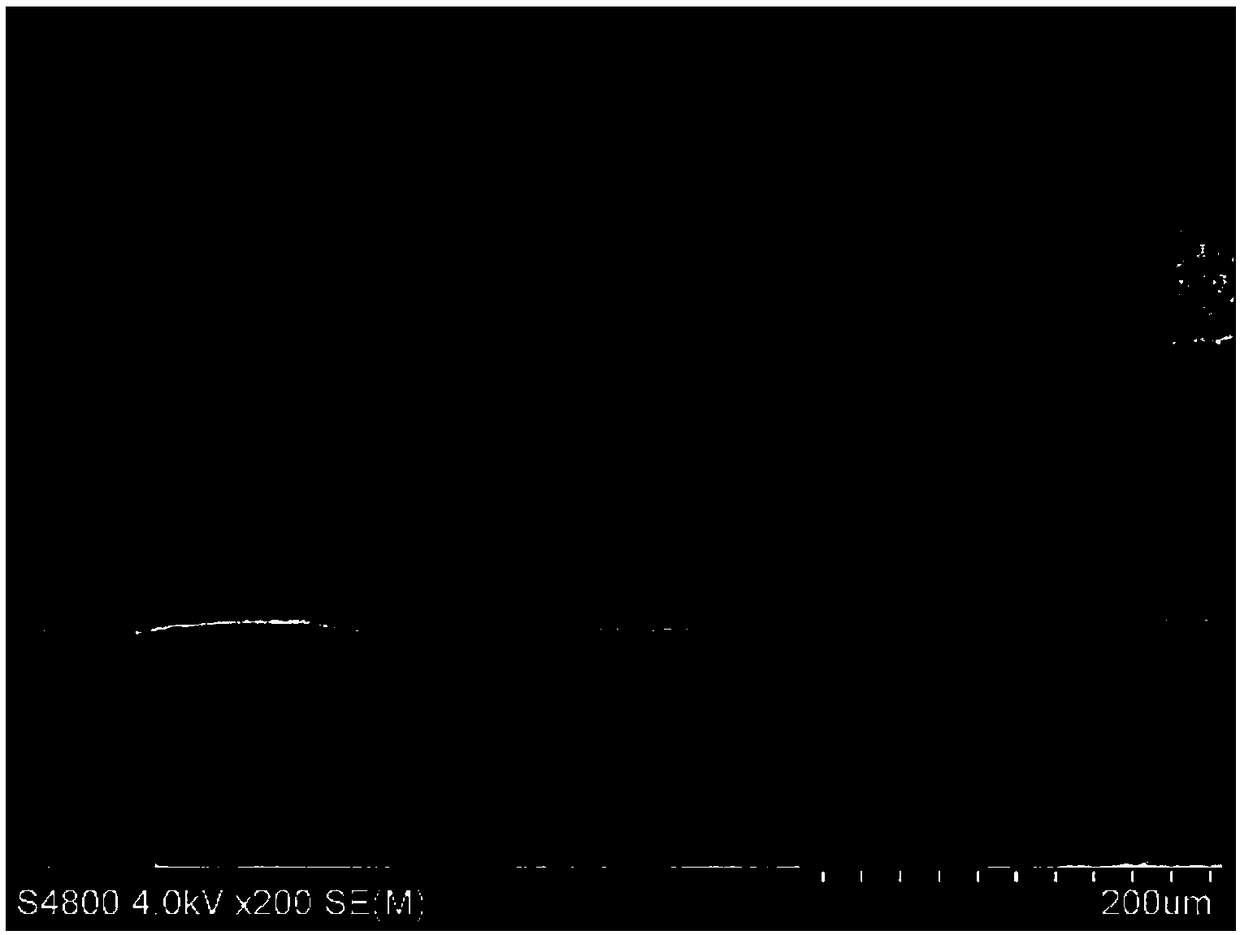High-performance Janus forward osmosis membrane and preparation method thereof
A forward osmosis membrane, high-performance technology, applied in the field of high-performance Janus forward osmosis membrane and its preparation, can solve the problems of internal concentration polarization, low water flux, high salt reverse diffusion flux, etc., to achieve high water Flux, membrane-making method is simple, and the effect of long service life
- Summary
- Abstract
- Description
- Claims
- Application Information
AI Technical Summary
Problems solved by technology
Method used
Image
Examples
Embodiment 1
[0031] (1). Dissolve polyvinylidene fluoride in triethyl phosphate at 60-100 o Stirring for 4-12 hours under C to make a film-forming precursor solution;
[0032] (2). Add 0.8g of azobisisobutyronitrile, 40g of N-vinylpyrrolidone, 30g of vinyltriethoxysilane, and 35g of triethyl phosphate into the film-forming precursor solution under a nitrogen or argon atmosphere. In-situ polymerization reaction, react for 6-48 hours, stop the gas atmosphere protection, expose the reaction to the air to terminate, obtain the casting solution after defoaming, and apply the obtained casting solution on the surface of the non-woven fabric through the film making process , to obtain the primary polymer film;
[0033] (3). Immerse the nascent film in 20-35 o The volume fraction of C is 40% in an aqueous solution of triethyl phosphate for 30 seconds to 5 minutes to complete the curing film formation and first crosslinking, then transfer to a warm water bath at 40-80°C, and continue to immerse fo...
Embodiment 2
[0039] (1). Dissolve polylactic acid in dimethylformamide at 75-125 o Stir for 5-72 hours under C to make a film-forming precursor solution;
[0040] (2). Add 1.0g dimethyl azobisisobutyrate, 48g N-vinylpyrrolidone, 35g vinyltrimethoxysilane, and 25g dimethylformamide to the film-forming precursor under nitrogen or argon atmosphere Carry out in-situ polymerization reaction in the solution, react for 6-48 hours, stop the gas atmosphere protection, expose the reaction to the air to terminate, obtain the casting solution after defoaming, and apply the obtained casting solution on the Spin the surface of the fabric to obtain a polymer primary film;
[0041] (3). Immerse the nascent film in 20-35 o The volume fraction of C is 50% in an aqueous solution of dimethylformamide for 30 seconds to 5 minutes to complete the curing film formation and first crosslinking, then transfer to a warm water bath at 40-80°C, and continue to immerse for 12-24 hours Complete the secondary cross-lin...
Embodiment 3
[0047] (1). Dissolve polysulfone in tripropyl phosphate at 75-125 o Stir for 5-72 hours under C to make a film-forming precursor solution;
[0048] (2). Add 1.2g dimethyl azobisisobutyrate, 50g N-vinylpyrrolidone, 34g vinyltriethoxysilane, and 28g tripropyl phosphate to the film-forming precursor under nitrogen or argon atmosphere Carry out in-situ polymerization reaction in the solution, react for 6-48 hours, stop the gas atmosphere protection, expose the reaction to the air to terminate, obtain the casting solution after defoaming, and apply the obtained casting solution on the Spin the surface of the fabric to obtain a polymer primary film;
[0049] (3). Immerse the nascent film in 20-35 o The volume fraction of C is 60% in tripropyl phosphate for 30 seconds to 5 minutes to complete the curing film formation and the first crosslinking, then transfer to a warm water bath at 40-80°C, and continue to immerse for 12-24 hours to complete the second time Cross-linking, after d...
PUM
| Property | Measurement | Unit |
|---|---|---|
| thickness | aaaaa | aaaaa |
| particle diameter | aaaaa | aaaaa |
Abstract
Description
Claims
Application Information
 Login to View More
Login to View More - R&D
- Intellectual Property
- Life Sciences
- Materials
- Tech Scout
- Unparalleled Data Quality
- Higher Quality Content
- 60% Fewer Hallucinations
Browse by: Latest US Patents, China's latest patents, Technical Efficacy Thesaurus, Application Domain, Technology Topic, Popular Technical Reports.
© 2025 PatSnap. All rights reserved.Legal|Privacy policy|Modern Slavery Act Transparency Statement|Sitemap|About US| Contact US: help@patsnap.com



